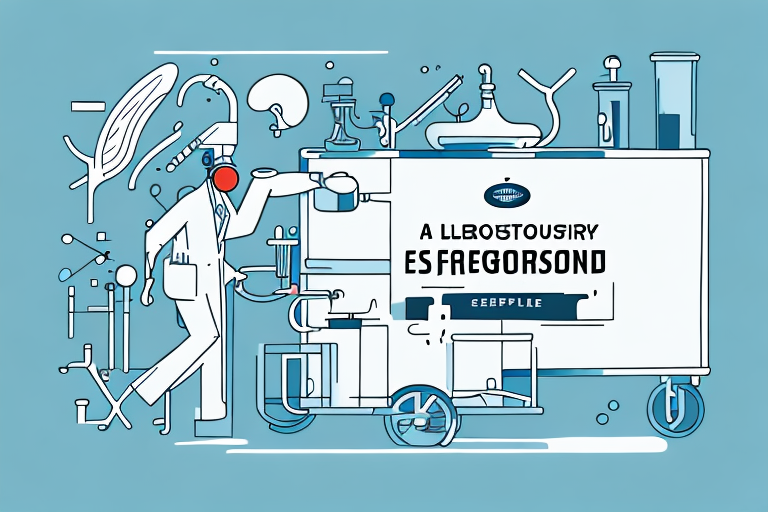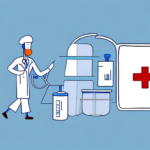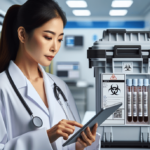Ensuring Safe and Efficient Specimen Transport
Effective specimen transport is critical to ensure that accurate results are obtained in laboratory testing. Specimens must be safely transported from the collection site to the laboratory without being damaged or deteriorated. This article highlights the importance of ensuring safe and efficient specimen transport, common challenges faced during the process, and best practices to overcome them.
Importance of Proper Specimen Transport for Accurate Test Results
Proper specimen transport is essential for achieving accurate diagnostic testing outcomes. Ensuring the quality of biological specimens involves several key factors:
- Contamination Prevention: Avoiding contamination maintains the integrity of the sample.
- Temperature Control: Maintaining correct temperatures preserves the chemical and physical properties of specimens.
- Timely Delivery: Prompt transport prevents specimen degradation, ensuring reliable results.
According to a study by the Centers for Disease Control and Prevention (CDC), improper handling during transport can lead to a significant increase in false-negative and false-positive results, impacting patient diagnosis and treatment plans.
Common Challenges in Specimen Transport and Effective Solutions
Temperature Control
Maintaining the appropriate temperature is crucial for specimen integrity. Utilization of specialized packaging such as insulated containers with ice packs or temperature-controlled shipping solutions can mitigate temperature-related issues.
Leakage and Breakage
Specimens are susceptible to leakage and breakage during transport. Implementing secure packaging techniques and using leak-proof containers can prevent such occurrences.
Timeliness
Delays in specimen transport can degrade samples. Establishing a reliable logistics network and utilizing real-time tracking tools ensures specimens reach laboratories promptly.
Essential Practices for Safe and Efficient Specimen Handling
Proper Labeling and Documentation
Accurate labeling with patient information, collection date, and unique identification numbers is vital. Including detailed documentation and handling instructions ensures specimens are managed correctly throughout the transport process.
Choosing the Right Packaging Materials
Selecting appropriate packaging based on specimen type is essential. For example, blood samples may require specific temperature ranges to prevent clotting. Utilizing FDA-approved packaging materials can enhance specimen protection.
Handling Hazardous Specimens
Hazardous specimens necessitate additional safety measures. Proper identification, specialized packaging, and adherence to safety protocols minimize risks associated with transporting biohazardous materials.
The Role of Technology and Compliance in Specimen Transportation
Advanced Tracking Systems
Modern tracking technologies provide real-time updates on specimen locations and conditions. These systems help monitor temperature, humidity, and transit times, ensuring specimens remain within required parameters.
Regulatory Compliance
Adhering to federal, state, and local regulations is imperative. Compliance with guidelines set by organizations such as the Occupational Safety and Health Administration (OSHA) ensures safe and lawful specimen transport.
Addressing Ethical and Cost Considerations in Specimen Transport
Ethical Handling of Specimens
Maintaining patient privacy and adhering to ethical standards is crucial. Implementing de-identification protocols and securing specimen data prevents misuse and protects patient confidentiality.
Cost-Effectiveness without Compromising Quality
Optimizing transport logistics and leveraging bulk shipping solutions can reduce costs. Investing in high-quality packaging materials and efficient routing ensures cost savings do not compromise specimen integrity.
Collaborative Partnerships
Developing strong partnerships with courier services and shipping companies that specialize in medical transport can enhance efficiency and reliability, leading to better outcomes and reduced costs.
Conclusion
Efficient and safe specimen transport is paramount for accurate diagnostic testing. By addressing challenges such as temperature control, leakage prevention, and timely delivery, and by implementing best practices in labeling, packaging, and documentation, laboratories can maintain specimen integrity. The integration of advanced technologies and adherence to regulatory standards further enhances the reliability of specimen transport processes. Balancing ethical considerations and cost-effectiveness ensures that healthcare providers deliver precise and timely diagnoses, ultimately improving patient outcomes.




















